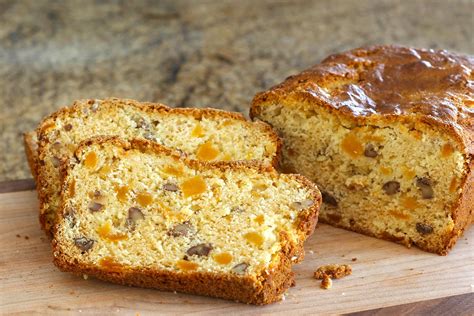Find expert tips on adapting recipes for dietary restrictions, substituting ingredients for allergies, creating variations for different tastes, adjusting portion sizes, and modifying cooking methods.
Adapting recipes to dietary restrictions
Contents
When it comes to cooking for ourselves or for others, it’s important to be mindful of any dietary restrictions that may need to be accommodated. Whether it’s a food allergy, a preference for a certain type of diet, or a medical condition that requires specific nutritional guidelines, there are a variety of reasons why someone may need to adapt recipes to meet their needs.
One way to modify recipes for dietary restrictions is to substitute ingredients that may be problematic. For example, if a recipe calls for dairy but someone is lactose intolerant, it can be helpful to use a plant-based milk or dairy-free alternative instead. Similarly, if a recipe calls for gluten but someone has a gluten intolerance, alternative flours such as almond flour or rice flour can be used as a substitute.
Another approach to adapting recipes for dietary restrictions is to create variations by altering the ingredients to fit specific dietary needs. This could involve adjusting the sugar content for diabetics, incorporating more protein for individuals following a high-protein diet, or omitting certain ingredients for those with specific food allergies.
In addition to substituting ingredients for allergies and creating variations for different tastes, it’s also important to consider portion sizes. Some individuals may require larger or smaller portions based on their specific dietary needs, so it can be helpful to adjust the recipe accordingly.
Lastly, if someone is following a specific diet method or using different cooking equipment, it’s important to modify cooking methods as needed. This could involve using different cooking techniques, adjusting cooking times, or altering the temperature to ensure that the recipe is suitable for the individual’s dietary restrictions.
Substituting ingredients for allergies
When it comes to cooking for people with allergies, it’s important to be mindful of the ingredients you use in your recipes. Allergies can range from mild to severe, so it’s crucial to make sure you’re accommodating everyone’s needs. One way to do this is by substituting ingredients that may be allergens with safe alternatives. For example, if someone is allergic to dairy, you can use almond milk, oat milk, or coconut milk instead of regular cow’s milk.
Another common allergy is to nuts, so you may need to find substitutes for nut-based ingredients like almond flour or peanut butter. In these cases, you could use alternative flours such as coconut flour or rice flour, and seed butters like sunflower seed butter or pumpkin seed butter. It’s important to check the labels of these substitutes to ensure they are safe for the person with allergies.
When substituting ingredients for allergies, it’s also important to consider cross-contamination. Even if a dish doesn’t contain a specific allergen, if it was prepared with the same utensils or in the same area as the allergen, it could still pose a risk. Be sure to thoroughly clean all cooking surfaces and tools when preparing allergy-friendly meals.
Finally, it’s a good idea to communicate with people about their specific allergies and dietary restrictions before cooking for them. This will give you a better understanding of their needs and allow you to make any necessary adjustments to the recipe. By being mindful of these considerations and making substitutions where needed, you can create delicious and safe meals for everyone to enjoy.
Creating variations for different tastes
Creating variations for different tastes
When it comes to cooking, it’s important to be flexible and adaptable in order to accommodate the preferences and dietary restrictions of those you are cooking for. Whether it’s a picky eater, a vegetarian, or someone with food allergies, there are always ways to tweak a recipe to suit different tastes.
One way to create variations for different tastes is to experiment with different flavor profiles. For example, if a recipe calls for a certain herb or spice that you or your guests don’t care for, try substituting it with something else that you enjoy. You can also use different types of sweeteners or seasonings to alter the taste of a dish.
Another approach is to customize the level of spiciness or heat in a recipe. Not everyone enjoys spicy food, so it’s important to be mindful of this when cooking for a group. You can easily adjust the amount of chili peppers, hot sauce, or other spicy ingredients to make the dish more or less fiery to suit different tastes.
Furthermore, varying the textures of the ingredients can also make a big difference in the overall taste of a recipe. Whether it’s adding crunchy nuts to a salad, creamy avocado to a soup, or chewy dried fruit to a savory dish, adding different textures can make the meal more interesting and appealing to a wider range of palates.
Lastly, considering the cultural or regional preferences can also help in creating variations for different tastes. For example, if a recipe calls for a certain type of cuisine, you can draw inspiration from other cultural dishes and add a twist to the recipe to cater to different tastes.
Adjusting portion sizes for small/large groups
When you’re cooking for a group of people, it’s important to consider the portion sizes of your recipes. Adjusting portion sizes for small or large groups can be a challenge, but with some careful planning, it can be done successfully.
One way to adjust portion sizes for a large group is to simply double or triple the ingredients in the recipe. However, this may not always work perfectly, especially when it comes to spices and seasonings. To ensure that the flavors are balanced, it’s important to taste and adjust as you go.
On the other hand, when cooking for a smaller group, you may need to halve or quarter the ingredients. This can be a bit trickier, as some ingredients may not divide evenly. In this case, it’s important to use your best judgment and make adjustments as needed.
Another thing to consider when adjusting portion sizes is the serving platters and dishes you’ll be using. If you’re serving a large group, you may need to invest in some larger serving dishes to accommodate the bigger portions. Conversely, if you’re cooking for a small group, smaller serving dishes or individual plates may be more appropriate.
Ultimately, adjusting portion sizes for small or large groups comes down to careful planning and preparation. With a little bit of creativity and flexibility, you can ensure that everyone is well-fed and satisfied, no matter the size of the group!
Modifying cooking methods for different equipment
When following a recipe, it’s important to consider that not everyone has the same cooking equipment. For example, some people may have a slow cooker while others have an Instant Pot. It’s necessary to adapt the cooking methods to accommodate different equipment so that the recipe turns out just as delicious.
One way to modify cooking methods for different equipment is to adjust the cooking time and temperature. For instance, if a recipe calls for baking in the oven, people with an air fryer should reduce the cooking time and temperature since air fryers cook food faster. On the other hand, for slow cookers, the cooking time may need to be increased since they cook food at a lower temperature over a longer period of time.
Another consideration is the size and shape of the cooking vessel. When using an electric pressure cooker, it’s important to ensure that the ingredients fit comfortably and that there’s enough liquid for the cooker to come to pressure. If using a smaller vessel, the recipe may need to be adjusted to fit the dimensions of the cooking equipment.
Furthermore, people with non-stick pans versus cast iron pans may need to modify the cooking methods to prevent food from sticking or burning. This could involve adjusting the amount of oil or butter used, as well as the cooking time and temperature. It’s important to understand the nuances of each type of cookware in order to achieve the desired results.
Overall, flexibility in cooking methods is key when using different equipment. By understanding the characteristics of each cooking appliance, it’s possible to modify recipes to suit the specific equipment being used, ensuring that the end result is just as delicious as the original recipe intended.













